
9/11 Memorial in New York, November 2012.

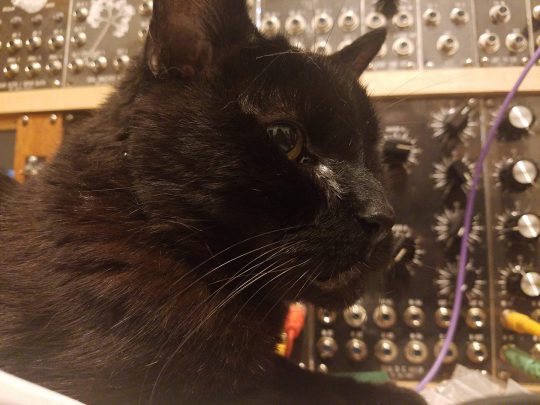
Today we feature this handsome senior house panther with a modular system. It looks it might be a Moog modular! From Teh Autowitch via our Facebook page.
The Mystery Cat! He’s around 19 years old, deaf, and very helpful.
We wish the Mystery Cat more years to come is his long life!
It’s been a wonderfully musical couple of weeks for us at CatSynth. Two days in the recording studio, our recent performance…and all of this bookended by concerts featuring our musical heroes. Today we visit the first of those concerts featuring Herbie Hancock at the Greek Theater in Berkeley.
Those who have been longtime readers of this site or familiar with some of my recent music will recognize the tremendous influence of Herbie Hancock, especially his Mwandishi and Head Hunters bands of the 1970s. For a concert in 2019, I honestly wasn’t sure what to expect. But from the moment the maestro took the stage, I was not disappointed.
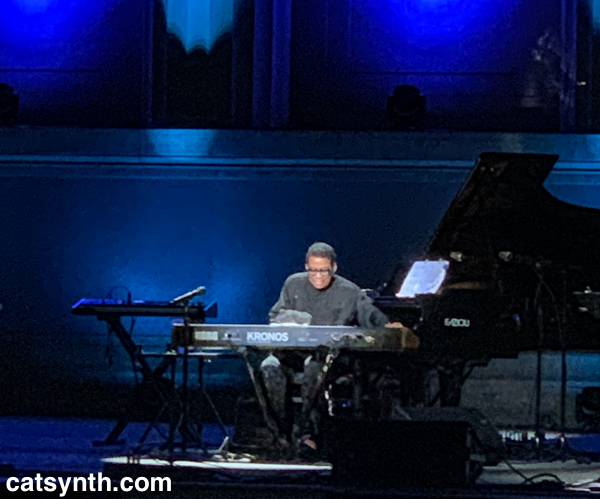
Together with his current band – Vinnie Colaiuta on drums, James Genus on bass, Lionel Loueke on guitar and multi-instrumentalist Terrace Martin on horns and keyboard – he revisited many of the old classics, but with new twists. Some, like Chameleon and Cantelope Island, pretty much followed their classic forms and were a delight. Others, like Butterfly and Sunlight were quoted more subtly or obliquely, teasing us a bit through solos, chord changes, and excursions before landing on the tune’s head just long enough of us to recognize it and use it as a point of departure for the next section. This is something that we have heard Wayne Shorter do in his more recent performances as well – just enough of a hint of the original tune for us to notice before departing into new musical territory. It was pretty much everything I would hope for from this concert.
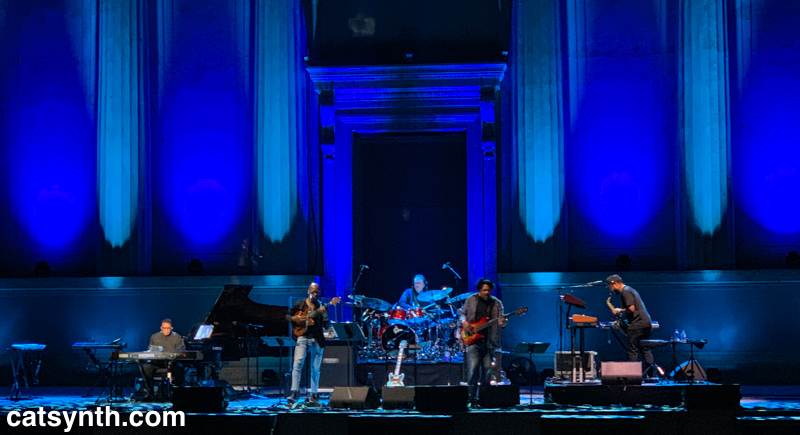
The music that I so love and admire (and try to play) but not as a museum or conservatory piece but as something dynamic and vital. He did a full rendition of Actual Proof, complete with introductory description – this piece is perhaps one of my favorites of his, in part because it is so rhythmically confounding – it is in 4/4 but the way the main riff spreads over bars, it can be hard to tell where the measures begin and end. I also enjoyed how he broke out the keytar and the vocoder from the late 1970s in several songs.
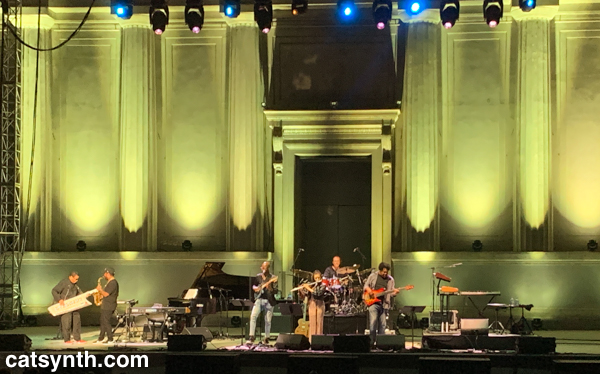
It wasn’t all updates on old favorites, as there was newer material as well. And he remains a consummate showman, giving his personal energy back to the crowd. Towards the end of the set, he led all of us in a wave while beaming from ear to ear – this then served as the introduction to a final encore jam of Chameleon where Kamasi Washington and others joined him on stage.
Kamasi Washington’s own set was also full of energy and complex music – perhaps a bit overshadowed for me by Herbie, but still a favorite of the crowd many of whom were sporting Washington’s t-shirts. He had an interesting band with two drummers (Tony Austin and Ronald Bruner Jr) and Cameron Graves on keyboard/synth. Rounding out the band was Ryan Porter on the trombone, Patrice Quinn on vocals, and Miles Mosley on bass. Perhaps the most touching moment was when Washington’s father, Rickey Washington, came out to join the band on soprano saxophone.
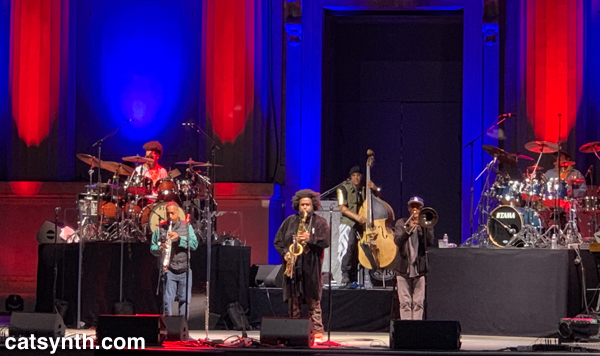
The opening set featured Robert Glasper and his band. A local favorite, his music weaved together elements of jazz with hip-hop. Centered around Glasper on keyboards, his group brought together different elements such as upright bass and turntable.
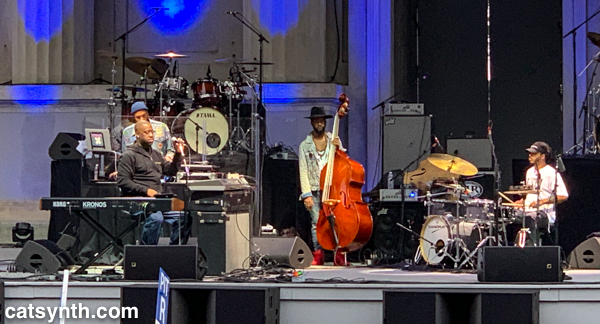
Overall, the show taken as a whole was one of the best live concerts I have seen in a while, which each group building on the foundation set by its predecessor, culminating in Herbie Hancock’s musical odyssey (there was, however, no Arp Odyssey this time). Even as an even chill settled into the Greek Theater during his set, I barely noticed. As as I practiced for my own music the coming week, I couldn’t help but notice myself doing more of those chromatically rising fast runs that are so characteristic of his solos. It’s not copying, but rather influence and tribute – a subject for another article at another time.
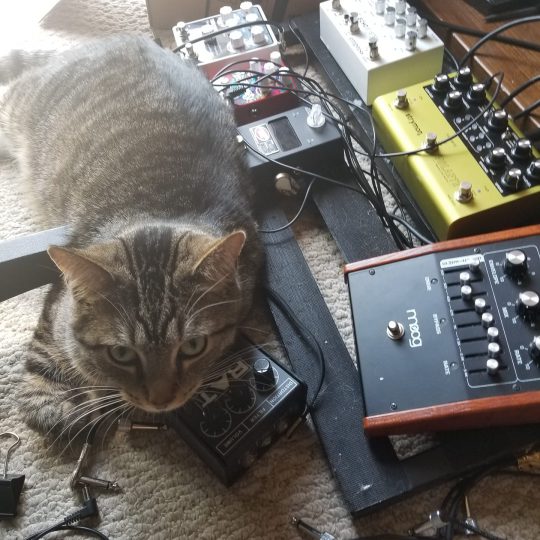
Banksy pounces on a RAT pedal alongside sundry offerings from Moog, Strymon and more. Submitted by Alberto Aldana via our Facebook page.
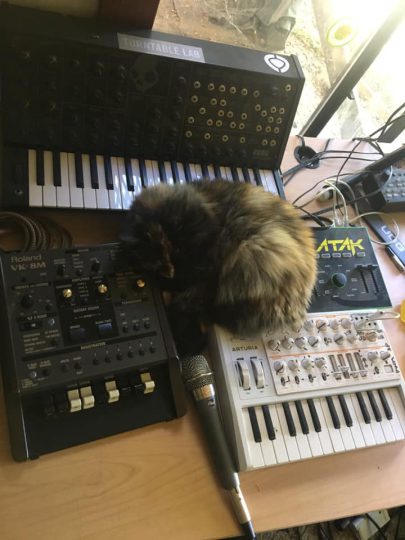
Meet Ms. Deucey, who has found a nice napping spot in between a Korg MS-20, white Arturia MicroBrute, a VK-8M from Roland, and something called “ATAK” 😸. Submitted by Elias Laughton via our Facebook page.
Here’s Ms Deucey, all of 13 years old, posing for the camera in my “pet free studio” 😬😬😬
Studios with cats are our favorite kind of “pet-free studio.”
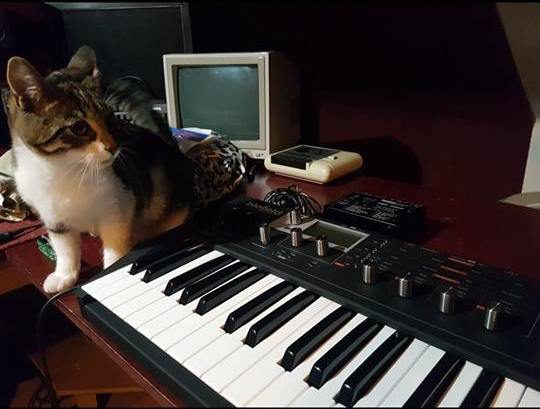
Boris checks out a Waldorf Blofeld synthesizer. Submitted by Edda Jayne Hill via our Facebook page.
A young and inquisitive Borris trying to work out the Blofeld.
I know he is more of an analogue cat tbh 😊
This past Thursday, the Center for New Music launched Compton’s Cafeteria Series, a set of occasional concerts featuring transgender performers. And I was there both the cover the show and be a part of it!
For those who are not familiar with the story, Gene Compton’s Cafeteria was a small restaurant chain and its Tenderloin location at the corner of Taylor and Turk Streets was one of the few places where transgender individuals, and especially transgender women, could safely congregate. There was, however, some tension between transgender patrons and the staff, who often called the police, with arrests and harassment ensuing. In 1966, this pattern led to the Compton’s Cafeteria Riots.

In the 1960s the Compton’s Cafeteria staff began to call the police to crack down on transgender individuals, who would frequent the restaurant.[8]Management felt that transgender customers were loitering and causing them to lose more desirable business. In response, they implemented a service fee directed at transgender individuals and blatantly harassed them in an attempt to get them to leave the restaurant.[8] In response to police arrests, the transgender community launched a picket of Compton’s Cafeteria.[9] Although the picket was unsuccessful, it was one of the first demonstrations against police violence directed towards transgender people in San Francisco.[9] On the first night of the riot, the management of Compton’s called the police when some transgender customers became raucous. Police officers were known to mistreat transgender people.[10]When one of these known officers attempted to arrest one of the trans women, she threw her coffee in his face.[2] According to the director of Screaming Queens, Susan Stryker, the cafeteria “erupted.”[5]
https://en.wikipedia.org/wiki/Compton%27s_Cafeteria_riot
This was nearly three years before the Stonewall Inn Riots in New York but has not gotten nearly the visibility in the time since. There is a plaque on the sidewalk in front of the former site at 101 Turk Street, and there is now an honorary street renaming of the 100 block of Taylor Street as Gene Compton’s Cafeteria Way – we featured the sign in our most recent Wordless Wednesday post.
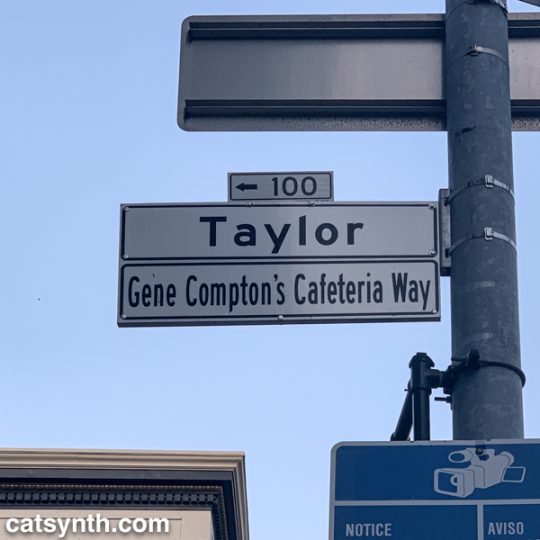
More importantly, the immediate vicinity has been recognized by the city as a “Transgender Cultural District.” As the Center for New Music is located in the heart of this new district, it seemed natural for them to host a series celebrating transgender visibility (and audibility), and I am grateful to the staff there and to my friend David Samas for proposing this and making it happen.
The show itself was a successful event featuring vary different performances, although they all made extensive use of hardware synthesizers. You can see some of the highlights in my latest video.
The evening started with a set by Rusty Sunsets (aka Cara Esten). Her performance was divided into two sections, the first featuring acoustic guitar and voice, and the second incorporating synthesizers and drum machines. Both parts were unified by Esten’s folk-song style, with a series of compositions about her upbringing in Oklahoma and loves lost and found. Perhaps the poignant was a love song inspired by the 1911 Triangle Factory fire in New York where 146 workers, the vast majority of whom were women, perished. My favorite was the final song which brought together a Moog Mother-32 and other synthesizers with plaintive but optimistic singing.

Next up was Pitta of the Mind (Amanda Chaudhary and Maw Shein Win). We performed a short set with a featured color of blue – set against the fuschia background lighting and my automated multicolor blinking lights. Musically, it had a very punctuated quality with abstract sounds from the modular and Arturia MicroFreak against some of Maw’s poems that featured open space and short lines. We mixed it up for the final piece, which had lusher and more emotive quality with longer lines and acoustic piano – these pieces are a strength for us and we always include at least one.

Then it was time for the final set, featuring my solo electronic performance. I started with the solo version of White Wine (and a cup of white wine). The Casio SK-1 was sampled and remixed in Ableton Live, with the statement of the melody and cords, followed by a cacophony leading into two distinct rhythmic sections: first a funk/disco sound featuring MicroFreak bass and a jazz piano improvisation; and then a Stereolab inspired electric-organ solo leading into a final section of tape-delayed metallic sounds (Strymon Magneto and Pocket Gamelan from Crank Sturgeon).
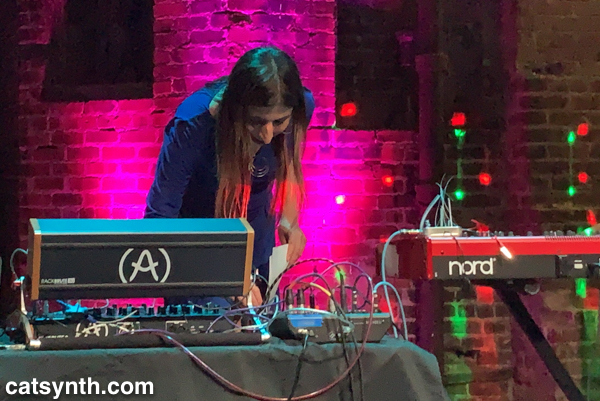
After that, it was on to the cat-infused and disco-and-French-House inspired Donershtik. The piece is just a lot of fun, a classic 70s analog melody (in this case on the Arturia MiniBrute) in Phrygian mode followed by playful modular improvisation (anchored by the MOK Wavewazor) going into the electric piano disco/house section.
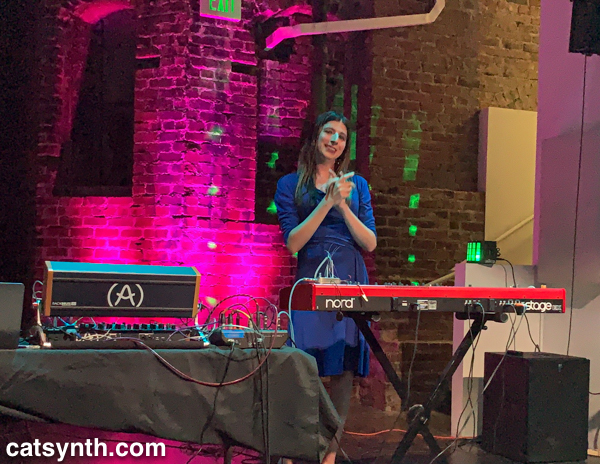
Overall, I think this was one of the best of my live solo sets, tightly choreographed with a relatively diverse and robust setup, and well-defined and well-rehearsed pieces. Once again, structure and hard work paid off.

But I also fed off the positive energy and enthusiasm of the crowd, which brought together regular friends and fans with members of the transgender community. It was a beautiful night overall, and I look forward to both being present and helping organize the next in this series.
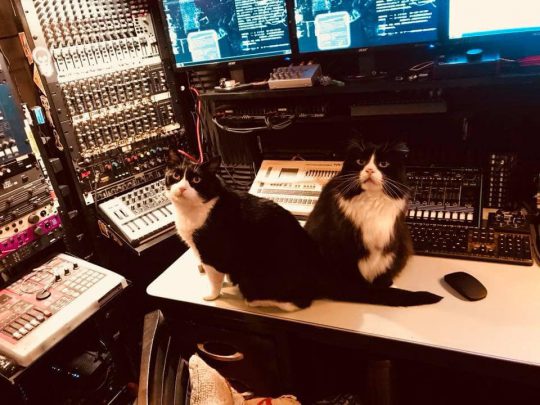
Blixa and Sasha hanging out in the studio. Submitted by Neil Parker via our Facebook page.
Identification of the synths and other gear in this picture left as an exercise to the reader.